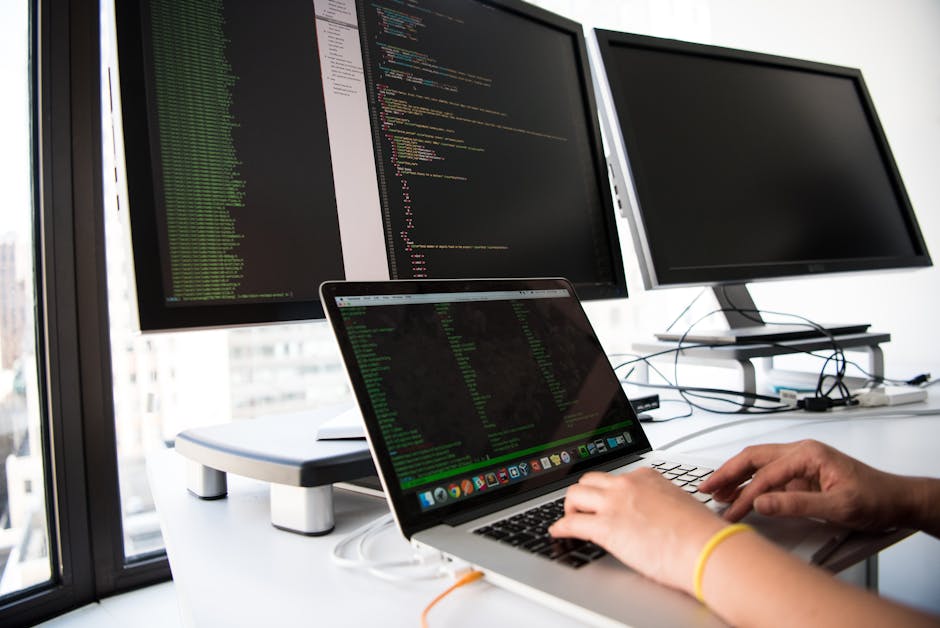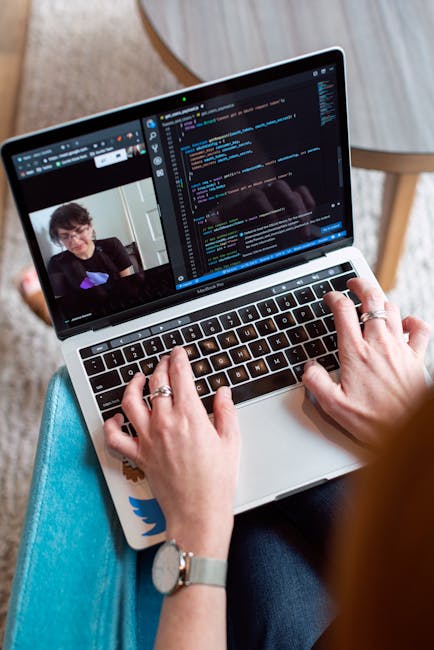
Article Images
 (Main image)
(Main image)
Introduction
In 2025, programming is undergoing a transformation with the advent of multimodal programming—a method that leverages multiple input modalities like voice, text, and visuals to create software. Powered by advanced AI models and intuitive interfaces, this approach allows developers to interact with coding environments in diverse ways, from dictating code to sketching UI designs. Multimodal programming promises to make development more accessible and efficient, but it also introduces new complexities.
What is Multimodal Programming?
Multimodal programming combines various input methods to interact with development tools:
Text: Traditional prompts or code snippets entered via keyboards or AI-assisted IDEs like Cursor.
Voice: Dictating code or commands to AI agents, such as Grok 3’s voice mode on mobile apps.
Visuals: Drawing UI layouts or flowcharts that AI converts into functional code, as seen in tools like v0 by Vercel.
For example, a developer might sketch a website layout on a tablet, describe its functionality via voice, and refine the generated code through text prompts. This synergy is enabled by AI models trained on diverse data, capable of interpreting and synthesizing inputs across modalities.
How It Works
Multimodal programming relies on AI systems that process and integrate multiple input types:
Input Collection: Developers provide inputs via voice (e.g., “Create a React app with a login page”), text prompts, or visual sketches.
AI Processing: Models like GPT-5 or Claude 3 interpret these inputs, mapping them to code structures. For instance, a drawn wireframe might be translated into HTML/CSS.
Code Generation: The AI produces a working prototype, often across multiple files, which the developer can test.
Iterative Refinement: Developers refine outputs using any modality, such as voice commands to fix bugs or text to tweak logic.
Tools like Opal by Google and Lovable integrate these capabilities, offering seamless transitions between input types. A 2025 X post by a developer showcased a game built by dictating logic, sketching sprites, and typing minimal code, completed in hours.
Benefits of Multimodal Programming
Multimodal programming offers significant advantages:
Accessibility: Non-coders can participate by using voice or visual inputs, lowering the barrier to entry.
Efficiency: Combining modalities speeds up prototyping. For instance, sketching a UI and dictating functionality can halve development time compared to traditional coding.
Creativity: Visual and voice inputs allow developers to focus on ideas rather than syntax, fostering innovation.
Collaboration: Teams can mix input methods, enabling designers to sketch UI while developers dictate logic, streamlining workflows.
A 2025 Y Combinator report noted that startups using multimodal tools reduced MVP development time by 35%, enabling faster market testing.
Key Tools and Platforms
Several tools are driving multimodal programming:
Grok 3 Voice Mode: Available on iOS and Android, it allows developers to dictate code or debug issues conversationally.
v0 by Vercel: Converts visual UI designs into React or Svelte code, with text-based refinements.
Claude Code: Supports text and voice inputs, integrating with IDEs for multi-file projects.
Figma CodeGen Plugins: Translate design mockups into code, bridging visual and text inputs.
Replit with Voice: Combines voice commands with collaborative coding environments for real-time team development.
These tools leverage APIs from xAI, OpenAI, and Anthropic, with platforms like x.ai/api offering developers access to multimodal capabilities.
Challenges and Limitations
Despite its potential, multimodal programming faces hurdles:
Input Ambiguity: Voice commands or sketches can be misinterpreted, leading to incorrect code. For example, vague voice prompts may produce suboptimal logic.
Learning Curve: Developers must master multiple input methods and understand AI limitations.
Code Quality: Multimodal outputs may lack optimization, requiring manual review for performance-critical applications.
Privacy Concerns: Voice and visual inputs processed by cloud-based AI raise data security risks, especially for proprietary projects.
Tool Integration: Not all platforms support seamless modality switching, leading to fragmented workflows.
A 2025 X thread by a tech lead highlighted frustration with voice-based coding when AI misheard complex terms, requiring extensive text-based corrections.
Real-World Applications
Multimodal programming is gaining traction across industries:
Startups: Rapid prototyping of apps using combined voice and visual inputs, as seen in 2025’s Y Combinator cohort.
Education: Tools like Opal enable students to learn coding through visual and voice interfaces, reducing reliance on syntax.
Game Development: Indie developers use sketches for character designs and voice for logic, creating games faster.
Enterprise: Teams build internal tools by combining designer-drawn UIs with developer-dictated backend logic.
For instance, a hobbyist used v0 and Grok 3’s voice mode to create a music visualizer app by sketching waveforms and dictating animation logic, completing it in a weekend.
The Future of Multimodal Programming
By 2027, multimodal programming could dominate software development. Advances in AI, such as improved natural language understanding and visual recognition, will enhance input accuracy. Integration with augmented reality (AR) could allow developers to “draw” apps in 3D space, while voice assistants become more adept at handling complex coding tasks. However, ensuring code quality and security will require human oversight, particularly for production systems.
The paradigm also aligns with “vibe coding,” where developers focus on high-level ideas. Multimodal tools could extend this trend, enabling “vibe-driven development” across industries. As platforms like x.ai/api expand, developers will gain more control over multimodal workflows, customizing AI behavior for specific needs.
Conclusion
Multimodal programming is redefining how we create software, blending voice, text, and visuals to make development more intuitive and inclusive. While challenges like input ambiguity and code quality persist, the benefits of speed, accessibility, and creativity are undeniable. Programmers who embrace multimodal tools and adapt to their nuances will lead the next wave of innovation, shaping a future where coding is as natural as conversation or sketching.



